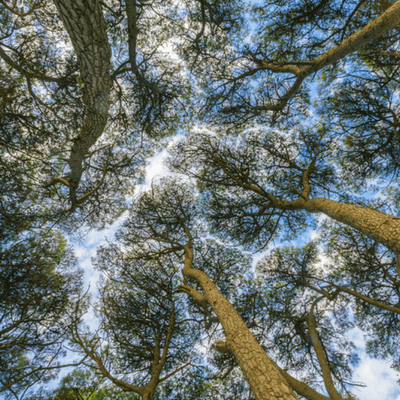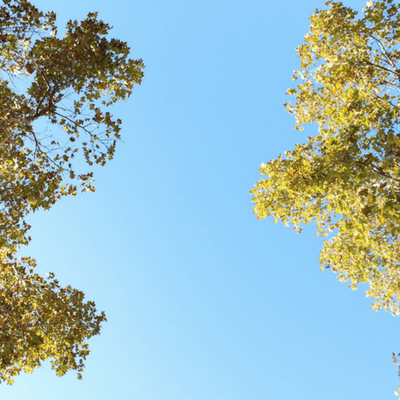Crown Shyness – A Fascinating Behavior in Trees
 A well-known but amazingly adaptive behavior in trees is a phenomena known as Crown Shyness.
A well-known but amazingly adaptive behavior in trees is a phenomena known as Crown Shyness.
Put more simply, crown shyness – also known as canopy shyness, canopy disengagement, and intercrown spacing – is a phenomenon observed in many species of trees, in which the crowns of mature trees do not touch each other. In so doing, the trees form a canopy that has channel-like gaps which, when photographed from below, appear to create an intricate network of channels between the respective canopies.
The Reason for Crown Shyness
The physiological reasons that crown shyness occurs is not definitely known; instead, various hypotheses exist as to the cause of this phenomenon. One theory cites the well-known ability of trees and plants to sense changes in light or the amount of light. The hypothesis holds that the leaves of trees in the canopy can ‘sense’ a neighboring leaf or set of leaves because of a different wavelength of backscattered light being perceived by the parent leaf. This in turn inhibits growth of the leaves at the canopy, such that they do not touch.
Another view holds that the abrasion experienced by neighboring trees from the blowing/moving leaves of other trees disrupts the growth nodules, thus limiting or eliminating growth from these nodules. It is believed that the growth tips of leaves are particularly sensitive to abrasion, and thus can in part explain the existence of canopy shyness.
Other hypotheses stress that trees and plants have an innate ability to sense neighboring plants and therefore, they can limit growth in regions where touching may be possible.
The Result of Crown Shyness
Whatever the cause of crown shyness, it is thought to have beneficial effects on trees and groups of trees. By having leaves that do not touch, this inhibits the spread of insects from one tree to the other. As insects often do damage to trees by eating the leaves, laying eggs on the leaves and stems, and spreading diseases from leaf to leaf, this results in healthier trees and a slowing of the spread of problems from tree to tree.
In a similar way, it is also thought to inhibit the spread of fungal and/or bacterial-based diseases and maladies. By keeping the leaves separate, these diseases tend to stay tree based – versus spreading throughout the entire group or forest of trees.
Tree Care – It’s What We Do
While we are amazed at things that trees do – such as crown shyness – the staff at Ryan Lawn & Tree simply loves trees – working with them, caring for them, nourishing them to help them grow.
We understand the value that healthy trees can bring to a homeowner’s property. We also are acutely aware that trees are to be respected – treated with the utmost care.
We provide these comprehensive services to our customers:
If you have any questions or concerns about your trees – give us a call today, or check out our website (ryanlawn.com) to learn ways we can help you enhance the investment you have in your trees.










